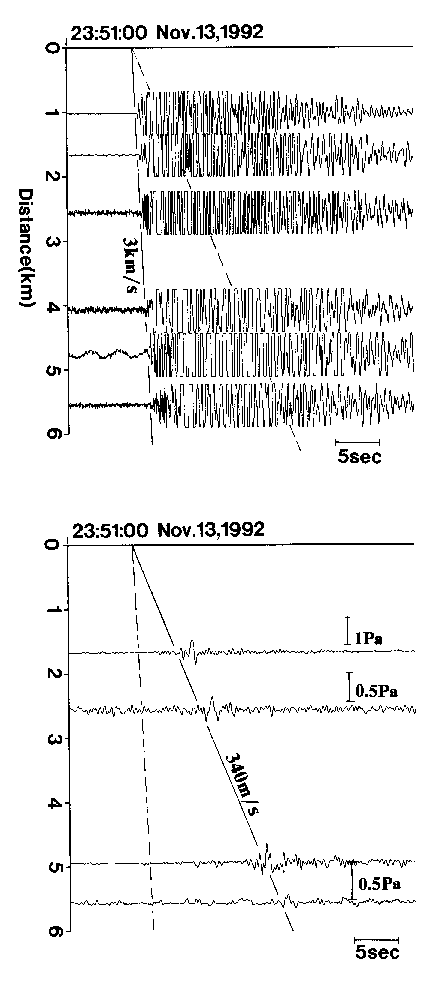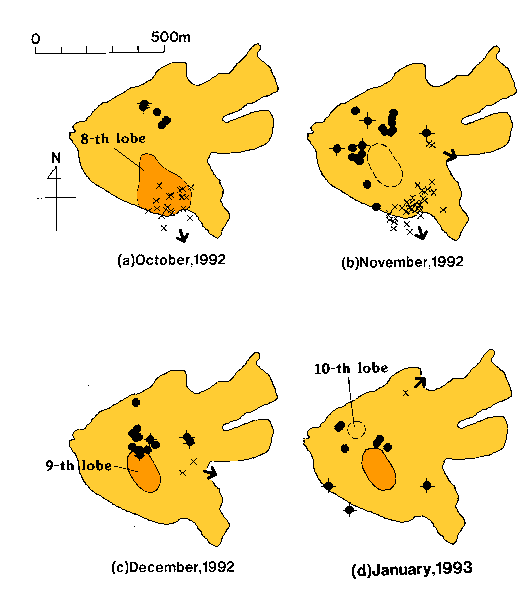Nature of Infrasonic pulse accompanying low frequency earthquake
Japanese
High frequency and low frequency earthquakes were observed associated with the intrusion of dacitic magma beneath the summit of Unzen volcano, Japan. The low frequency earthquakes were accompanied by small impulsive infrasonic signals (see Fig.1), whereas the high frequency earthquakes were not. From the records of a low frequency microphone network, the infrasonic pulses are inferred to be excited at almost the same times as the earthquake occurrences. Source location of the infrasonic pulses could be accurately identified from the records of the low frequency microphone network. The sources were distributed around areas from which new lava was emerging (see Fig. 2). The infrasonic pulse is inferred to result from an emission of volcanic gases through a fracture of an existing lava dome due to the intrusion of new magma.

Fig.1 An example of seismic (upper) and infrasonic (lower) records from a low frequency earthquake beneath the dome. The records are arranged according to the distance from the source. Seismic records are for the vertical component. An impulsive infrasonic signal was excited at the time of the earthquake occurrence.

Fig.2 Distribution of the sources of infrasonic signals determined from the record of the low frequency microphone network from October, 1992 to January, 1993. Closed circles indicate those of infrasonic pulses that were associated with low frequency earthquakes. Those with crosses were followed by small avalanches. Crosses are for those associated with dome collapses. Arrows indicate the direction of pyroclastic flows which followed the dome collapses. Areas that are enclosed by solid and dashed lines are the locations of new lava lobes that were emerging and have emerged, respectively.
This paper is appared in Bullentin of Volcanological Society of Japan (Vol. 43, pp. 1-13).
To Index

